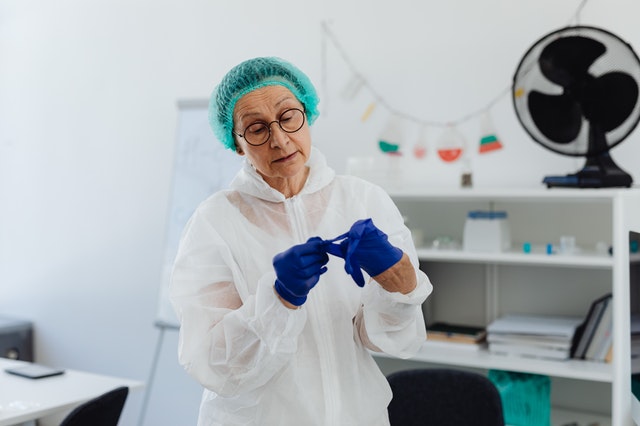Hygiene and safety (PPE) conditions in the food sector are among the most essential and controlled issues to prevent product contamination.
As a consequence of contamination, a product’s quality and expiration date are affected. In addition, this also affects the company’s image and, as a result, costs.
For this reason and some others, such as the employees’ safety, it is essential to work on safety (PPE) and hygiene in the food sector. How? Selecting the appropriate work clothes capable of complying with current food legislation.
Table of Contents
Avoid contamination in the food sector.
There is a high risk that contamination or infection comes directly from the workers involved in the manufacturing process in the food sector.
For this reason, companies in the food industry must take care in the selection of work clothes used by workers. To do this, they can choose garments made with materials suitable for the performance of the task.
The choice of PPE in the food industry should be geared towards uniforms specially designed to prevent contamination with dust particles, bacteria, or other elements found in the “street” clothing that we usually wear.

Risks for employees in the food industry
When we talk about risks in the food industry, consumers are in danger and the workers of the same organization.
In the maintenance and cleaning of production machinery, employees may be exposed to some cleaning chemicals, such as disinfectants.
This type of product commonly used in the food or beverage sector has a series of components such as alcohols, hypochlorite’s, acids, and other elements that can have harmful consequences for those exposed to or maintain contact with them regularly.
What biological risks are workers in the food industry exposed to?
‘Uncontrollable’ risks
In the food industry, part of the employees is more exposed to some biological agents such as:
There is a risk of contracting the hepatitis A virus. When handling mollusks such as mussels, oysters, crustaceans, or salads produced with organic fertilizers.
Or, you can also contract salmonella bacteria. Quite common in meat processing or slaughterhouses and the handling of dairy products, nuts, and fish. Or also when processing vegetables treated with organic fertilizers.
‘Controlled’ risks
Until now, we have talked about the risks to which employees in the food industry are exposed due to errors or “uncontrollable” processes. However, there is also the fact that biological agents that are considered a risk to workers are intentionally introduced throughout food processing, as is the case in dairy production where lactic acid bacteria are used.
As a result, a couple of common objectives emerge, to protect the product that reaches the final consumer from specific contaminants. And, on the other hand, protect the worker from the risks they face when dealing with these contaminants.
To avoid these risks and maintain a high level of protection for their employees, companies in the food industry dedicated to food processing must take care in selecting work clothes and personal protective equipment that their workers will use.
Every company should opt for PPE in the food industry that meets the highest performance biological protection requirements.
And you, have you considered whether your employees have adequate protection against contaminating agents in their jobs?
